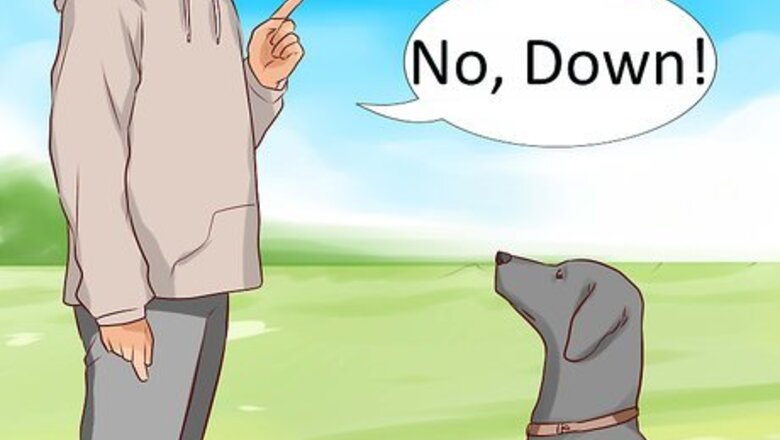
views
Applying Light Restraint

Use verbal restraint first. Many dogs know obedience commands. Of course, you will know if your own dog knows commands such as sit, down, stay, and no. Communication can sometimes be the key to better understanding and a problem solved. Verbal restraint is very valuable in those instances where a dog might get loose and start running. A well trained dog can be recalled with "come" if it is running towards danger. Proper training at an early age can help you gain this valuable restraint over your dog. Use verbal communication first but it can also be combined with other restraint techniques.
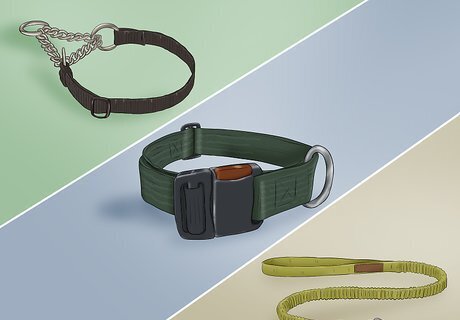
Use a collar to restrain your dog. Collars can be used to restrain dogs if the animal just needs general restraint. However, collars can be slipped out of, as dogs can twist trying to get away and hurt themselves or the people handling them. Never hold the collar around the neck of a dog with protruding eyeballs (like Pugs.) If they struggle you can literally cause their eye balls to pop out of the socket, injuring the eyes and in extreme cases causing blindness.

Use a harness to restrain your dog. Harnesses, which fit around the dog’s chest in front of and behind the front legs, are a great choice for restraint. They do not put pressure on the dog's neck like a collar does. This is a big plus for dogs with trachea that collapse or for dogs that pull very hard when on the leash. A dog is less likely to slip out of a harness than they are with a collar. In general, a harness gives a more secure and safer hold on a dog.
Applying Full Restraint
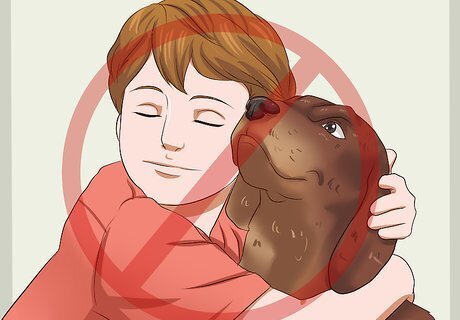
Avoid common mistakes. If a dog needs some serious restraint there are some things you should avoid for your own safety. These include: Never put your face at the dog’s level without absolute control over its head. You can get bit that way. Don't expect an injured dog to behave as it normally does. An injured dog can bite out of pain and fear, even its beloved owner. Do not do attempt to restrain a dog if you do not feel confident in how to do it.
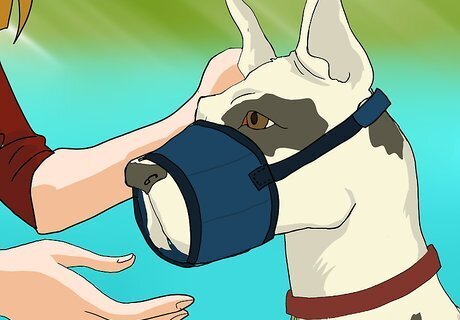
Muzzle the dog. Gauze can be used to muzzle a dog in a pinch. Cut a length of gauze (about 1 foot for small dogs and 2 feet for large dogs) and make a loose knot in the middle. Put the loop of the knot around the dog’s muzzle. Tie it off snugly on top of the nose then take the loose ends and tie them behind the dog’s ear snugly. Alternatively, there are muzzles that you can purchase that are made of fabric or nylon and work in the same manner. Gauze muzzles and basic nylon muzzles will leave the nostrils and mouth exposed allowing the dog to breathe normally. Train your dog on a muzzle so they're used to you putting it on. Sometimes the surprise of being muzzled keeps the dog distracted enough to perform procedures like nail trims, ear drop placement or any other minor medical procedure with relative ease. If you have a “pushed in” face dog (like a pug), use a muzzle specifically made for them. You can also use an Elizabethan collar.
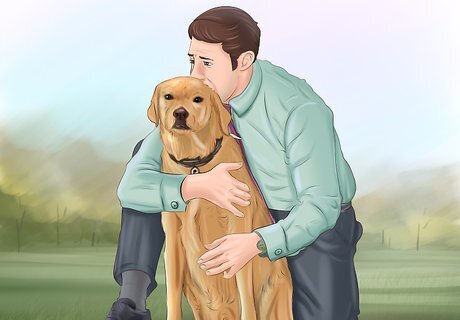
Restrain the dog. Dogs can be restrained while they sit or stand by placing one of your arms underneath the neck, so the dog's neck rests on your elbow. Then your other arm should be placed around the dog to draw the dog’s body close to your body. Alternatively, the arm can be placed under the dog’s belly to keep it standing. To lay a larger dog on its side have the dog stand in front of you. With your arm near the head of the dog, reach around to grab the lower front legs together. Place your index finger between the legs. With your other hand do the same to the back back legs. In one motion gently life with gently lift the dog and let it slide to the ground onto its side using your body as a “slide” for the dog. Then you will need to place your forearms on the neck and body of the dog to gently hold the dog on the floor or counter. During this the dog may struggle so you need to have a firm grip on the dog and move quickly before the dog starts to struggle. If you do not think you’re capable of this have your veterinarian or veterinary technician demonstrate this technique to you first.
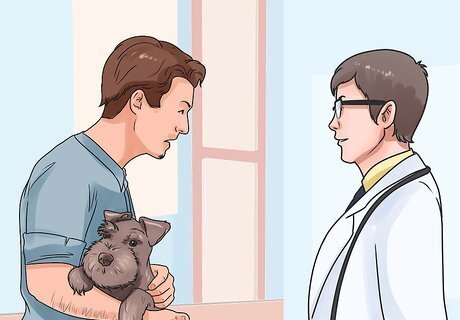
Ask your veterinarian, or veterinary technician, to demonstrate these restraint techniques. Veterinarians, and the people who work in veterinary offices, are well versed in restraint techniques. Ask for advice the next time you are at the vet. Knowing how to safely restrain a dog could come in very handy in the future.
















Comments
0 comment